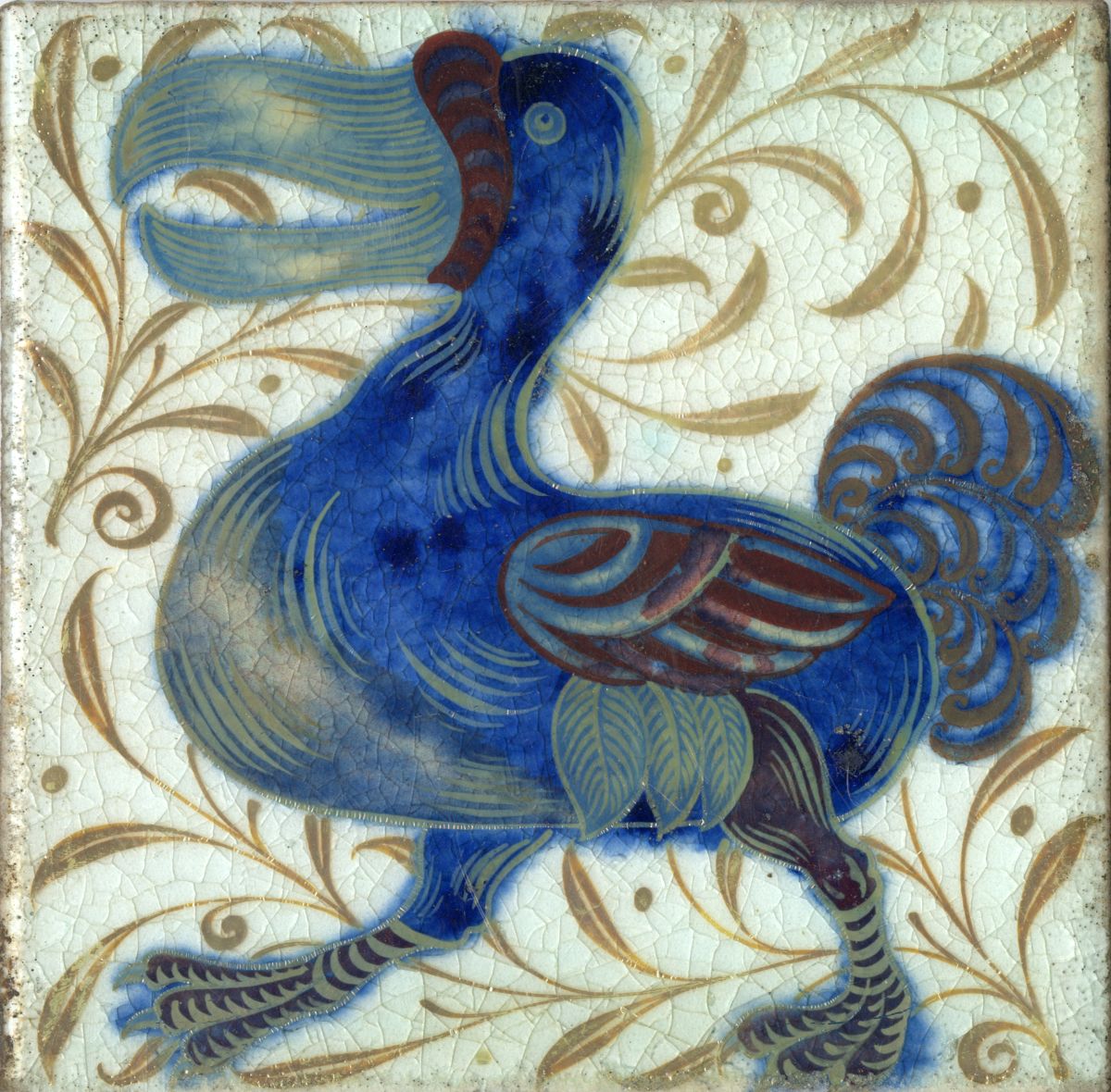| Object Number: | C_WDM_T0624 | |
| Date: | 1898 | |
| Category: | Ceramic, Ceramics Highlights, Multi-Lustre Earthenware, and Tiles | |
| Material: | Multi-Lustre Earthenware | |
| Dimensions: | Height 154mm, Width 155mm, Depth 12mm | |
| Inscriptions: | Pottery Mark: Late Fulham Period Impressed mark (n) [DM98]Reverse, CentreDM 98 |
6 inch earthenware tile decorated with a multi-lustre Dodo on an engobe ground.
The dodo is an extinct flightless bird that was endemic to the island of Mauritius, in the Indian Ocean. The dodo was popularised in the Victorian period by Lewis Carol who featured the flightless bird in his work of fiction, Alice in Wonderland. This endearing animal is one of many charming designs produced by De Morgan which were perennially popular in the Victorian period. Typical application of these tiles would be in a nursery bathroom.
De Morgan created multiple designs based on the same motif, by changing the background from plain, to decorative or by changing the colour. This particular tile is decorated with gold, copper and silver lustre highlights. These metals all have different melting temperature and have to be fired separately; accordingly this tile would have been fired 6 times and is very rare as it was challenging and expensive to produce.
Whilst De Morgan often bought blank tiles from other tile manufactures to decorate, this particular one was made by De Morgan’s own pottery. It is stamped on the reverse with the impress mark DM98 which dates the tile to De Morgan’s pottery in Sands End in 1898. Sands End was an area of Fulham near Wandsworth Bridge.


